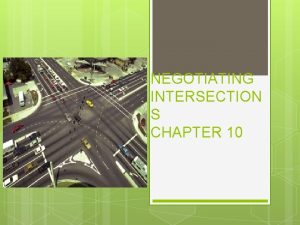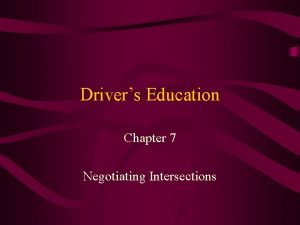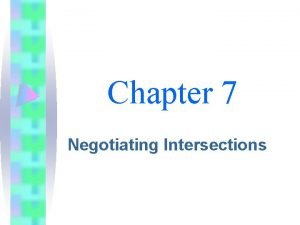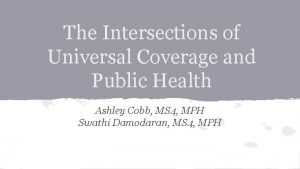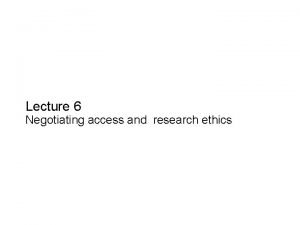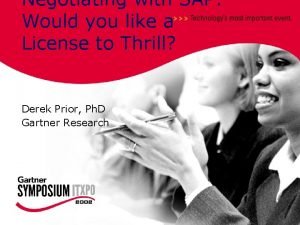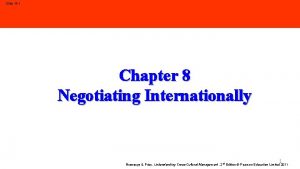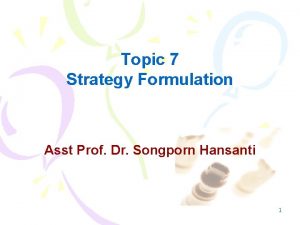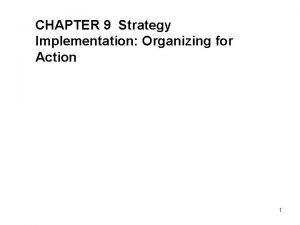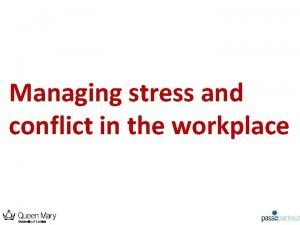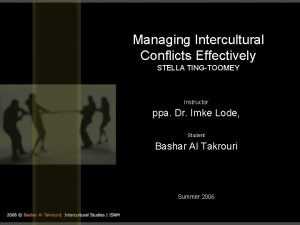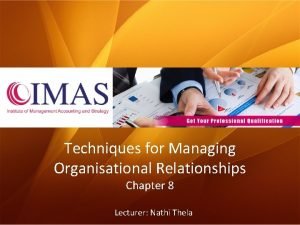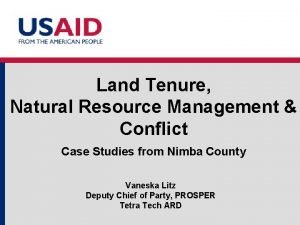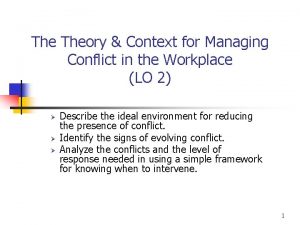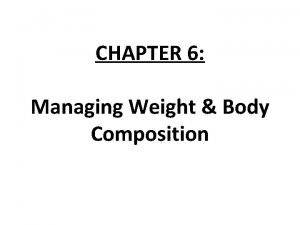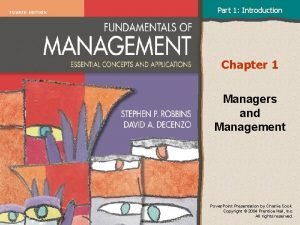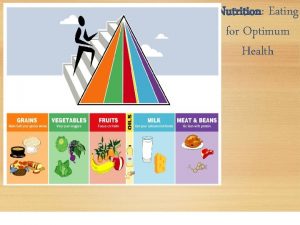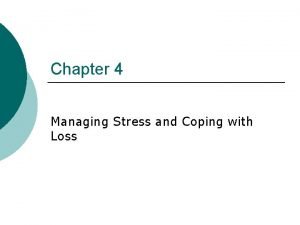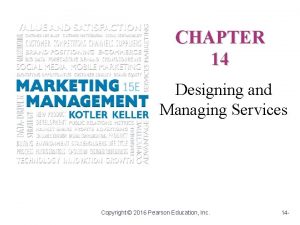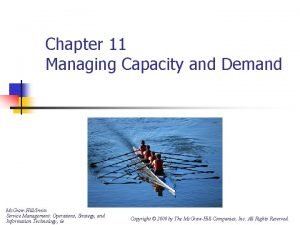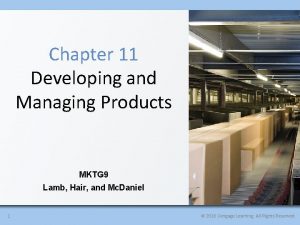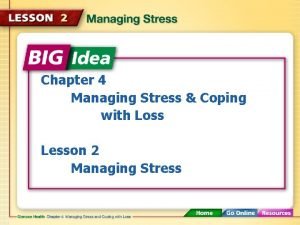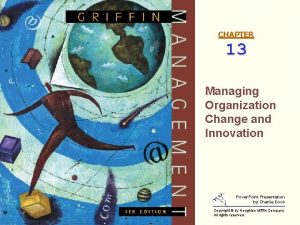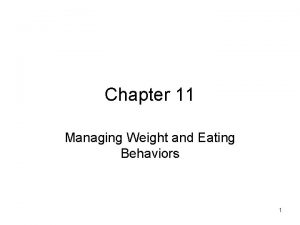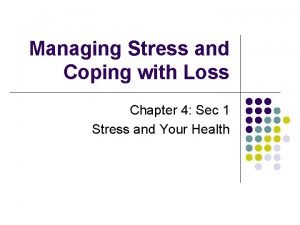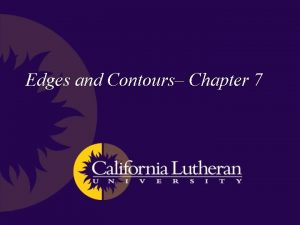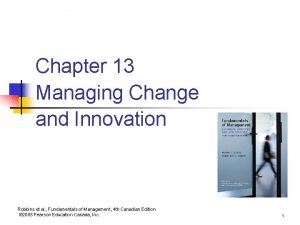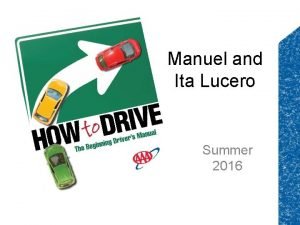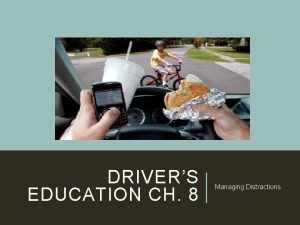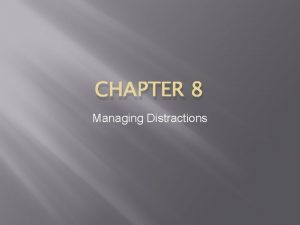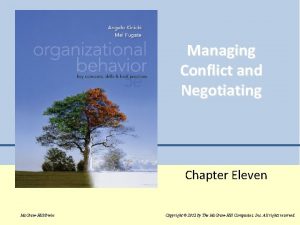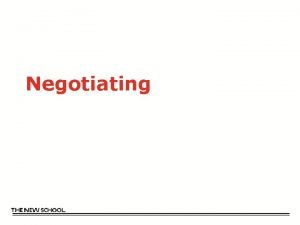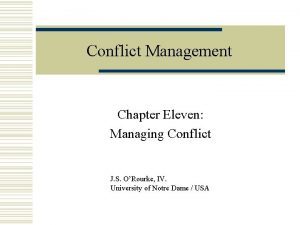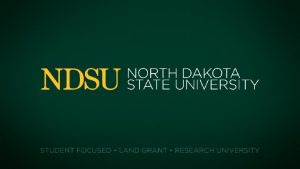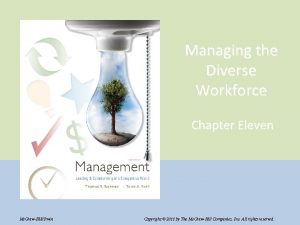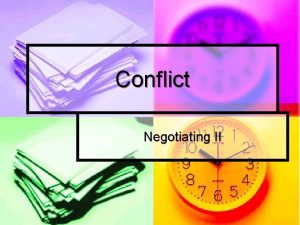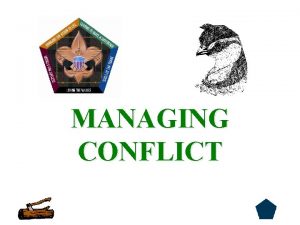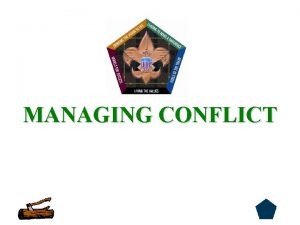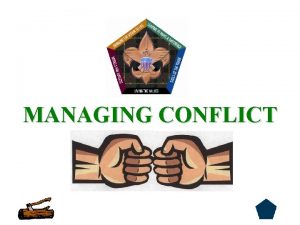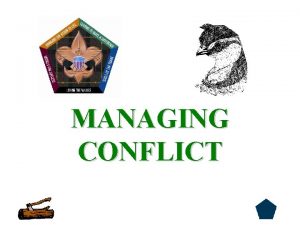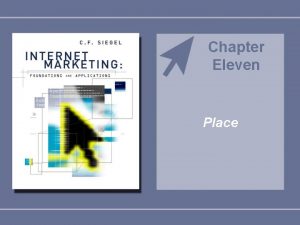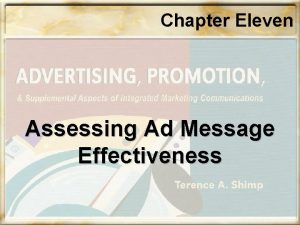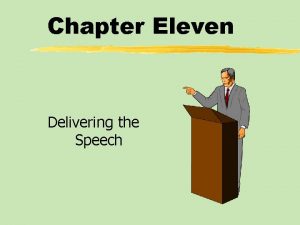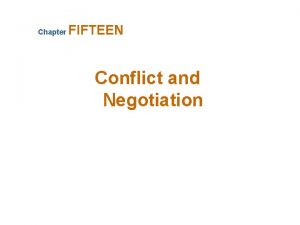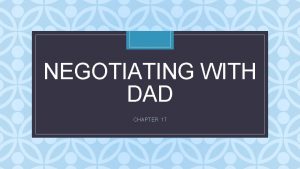Chapter Eleven Managing Conflict and Negotiating Mc GrawHillIrwin











































- Slides: 43

Chapter Eleven Managing Conflict and Negotiating Mc. Graw-Hill/Irwin Copyright © 2010 The Mc. Graw-Hill Companies, Inc. All rights reserved.

After reading the material in this chapter, you should be able to: • Define the term conflict, distinguish between functional and dysfunctional conflict, and identify three desired outcomes of conflict. • Define personality conflicts, and explain how they should be managed. • Discuss the role of in-group thinking in intergroup conflict, and explain what can be done to avoid cross-cultural conflict. 11 -2

After reading the material in this chapter, you should be able to: • Explain how managers can program functional conflict, and identify the five conflict handling styles. • Identify and describe at least four alternative dispute resolution (ADR) techniques. • Draw a distinction between distributive and integrative negotiation, and explain the concept of added-value negotiation. 11 -3

Major Trends that Make Conflict Inevitable • Constant change • Greater employee diversity • More teams (virtual and self-managed) • Less face-to-face communication • Global economy with increased crosscultural dealings 11 -4

A Modern View of Conflict • Conflict - process in which one party perceives its interests are being opposed or set back by another party 11 -5

Functional versus Dysfunctional Conflict • Functional conflict - serves organization’s interests. • Dysfunctional conflict - threatens organization’s interests. 11 -6

Antecedents of Conflict • Incompatible personalities or value systems. • Overlapping or unclear job boundaries. • Competition for limited resources. • Interdepartment/intergroup competition. • Inadequate communication. • Interdependent tasks. • Organizational complexity 11 -7

Antecedents of Conflict • Unreasonable or unclear policies, standards, or rules. • Unreasonable deadlines or extreme time pressure. • Collective decision making • Decision making by consensus. • Unmet expectations. • Unresolved or suppressed conflict. 11 -8

Question? As a manager of a forty-five person department, Connie has always heard that there are certain situations that produce more conflict than others. She is interested in learning about these situations so she can carefully read early warnings and take appropriate actions. Which of the following is not an antecedent of conflict? A. Inadequate communication B. Organizational simplicity C. Decision making by consensus D. Unmet expectations 11 -9

Why People Avoid Conflict • Harm • Rejection • Loss of relationship • Anger • Being seen as selfish • Saying the wrong thing • Intimacy 11 -10

Desired Outcomes of Conflict 1. Agreement 2. Stronger relationships 3. Learning 11 -11

Major Forms of Conflict • Personality conflict - interpersonal opposition driven by personal dislike or disagreement. 11 -12

How to Deal With Personality Conflicts 11 -13

Question? Having taken this OB class and learned about how they deal with personality conflict, what tip(s) would you offer to employees having a personality conflict? A. In resolving conflict, focus on personalities. B. Bring co-workers into the conflict so you have witnesses. C. Communicate directly with the other person to resolve the perceived conflict. D. Keep the direct supervisor out of the conflict loop, especially if the dysfunctional conflict persists. 11 -14

Intergroup Conflict • Intergroup conflict - conflict among work groups, teams, and departments • Too much cohesiveness can breed groupthink because a desire to get along pushes aside critical thinking 11 -15

Handling Intergroup Conflict • Contact hypothesis - the more the members of different groups interact, the less intergroup conflict they will experience • Managers should identify and root out specific negative linkages between groups 11 -16

Question? Don is an Executive VP of a regional health-insurance company. He has noticed that the different departments do not work well together and seem more concerned with “protecting their turf” than in working to reach organizational goals. Don thinks that if he can create some group activities, the departments will have less conflict. This is called _____. A. Convex theory B. Concave hypothesis C. Contact hypothesis D. Intergroup theory 11 -17

Managing Intergroup Conflict: An Updated Contact Model Figure 11 -18

How to Build Cross-Cultural Relationships 11 -19

Programming Functional Conflict • Programmed Conflict - encourages different opinions without protecting management’s personal feelings. 11 -20

Programming Functional Conflict • Devil’s advocacy - assigning someone the role of critic. • Dialectic method - fostering a debate of opposing viewpoints to better understand an issue. 11 -21

Techniques for Stimulating Functional Conflict: Devil’s Advocacy Figure 11 -22

Five Conflict Handling Styles Figure 11 -3 11 -23

Alternative Styles for Handling Dysfunctional Conflict • Integrating - interested parties confront the issue and cooperatively identify the problem, generate and weigh alternative solutions, and select a solution • Appropriate for complex issues plagued by misunderstanding 11 -24

Question? In handling conflict, Jorge believes that interested parties must confront the issue and cooperatively identify the problem, generate and weigh alternative solutions, and select a solution. Jorge can be described as advocating which conflict handling style? A. B. C. D. Obliging Integrating Dominating Avoiding 11 -25

Alternative Styles for Handling Dysfunctional Conflict • Obliging (Smoothing) - involves playing down differences while emphasizing commonalities • Appropriate when it is possible to get something in return 11 -26

Alternative Styles for Handling Dysfunctional Conflict • Dominating (Forcing) - relies on formal authority to force compliance • Appropriate when an unpopular solution must be implemented 11 -27

Alternative Styles for Handling Dysfunctional Conflict • Avoiding - involves either passive withdrawal from the problem or active suppression of the issue • Appropriate for trivial issues 11 -28

Alternative Styles for Handling Dysfunctional Conflict • Compromising - give-and-take approach involves moderate concern for both self and others • Appropriate when parties have opposite goals 11 -29

Third Party Interventions: Alternative Dispute Resolution • Alternative Dispute Resolution - avoiding costly lawsuits by resolving conflicts informally or through mediation or arbitration 11 -30

Alternative Dispute Resolution • Facilitation • Conciliation • Peer review • Ombudsman • Mediation • Arbitration 11 -31

Question? Fredhandbag Photography has created a panel of trustworthy employees to decide on disputes at the company. This is called _____. A. Mediation B. Facilitation C. Conciliation D. Peer review 11 -32

Negotiating • Negotiation - give-and-take process between conflicting independent parties. • Two types: - Distributive - Integrative 11 -33

Question? The local one-hour-photo workers union was unhappy with the present contract. The process to work out a new contract is called ______. A. Facilitation B. Negotiation C. Concession D. Arbitration 11 -34

Added-Value Negotiation • Added-Value Negotiation - cooperatively developing multiple-deal packages while building a long-term relationship 11 -35

Steps in Added-Value Negotiation 1. 2. 3. 4. 5. Clarify interests Identify options Design alternative deal packages Select a deal Perfect the deal 11 -36

Seven Steps To Negotiating Your Salary 1. 2. 3. 4. 5. 6. 7. Know the market rate Consider the economy Know your own value Be honest Don’t go first Consider benefits, too Look at the long term 11 -37

Supplemental Slides • Slides 39 -43 contain extra non-text examples to integrate and enhance instructor lectures - Slide 39: Conflict Monitoring Slide 40: Costs of Dysfunctional Conflict Slide 41: Why Conflict Matters Slide 42: Management in the Movies Jaws – “The Town Meeting” - Slide 43: Video discussion slide 11 -38

Conflict Monitoring • Read an article on Conflict monitoring 11 -39

Costs of Dysfunctional Conflict • Fortune 500 senior executives spend 20 percent of their time in litigation activities. • Typical managers spend up to 30 percent of their time dealing with conflict. • The turnover costs for an employee are anywhere from between 75 percent and 150 percent of their annual salary. • 16 percent of employees report conflict with a supervisor as the main reason for leaving their last job. 11 -40

Why Conflict Matters • “The best insurance against crossing the ethical divide is a roomful of skeptics. ” • “CEOs must actively encourage dissent among senior managers by creating decision-making processes, reporting relationships, and incentives that encourage opposing viewpoints…” • “By advocating dissent, top executives can create a climate where wrongdoing will not go unchallenged. ” Source: The crisis in corporate governance, 5/6/2002, Business. Week Special Report) 11 -41

Management in the Movies Jaws – “The Town Meeting” • In this scene, the Mayor is leading a town meeting with Chief Brody and the merchants. • Questions - How is the conflict of closing the beach handled? - Which conflict management strategy does Chief Brody use? - Which strategy does the mayor use? 11 -42

Video: Toxic Coworkers • Annoying coworkers can be found in every organization. How can you turn these situations around to have good outcomes result? • Is the conflict being described here functional or dysfunctional? Why? • Do you think there are there more annoying people today than in the past, or are we just more sensitive to our working environment? • What different types of conflict did you pick up on being described in the video? 43
 Chapter 10 negotiating intersections
Chapter 10 negotiating intersections A(n) has no signs or signals to regulate traffic.
A(n) has no signs or signals to regulate traffic. Uncontrolled railroad crossings usually have ______.
Uncontrolled railroad crossings usually have ______. An uncontrolled railroad crossing usually has
An uncontrolled railroad crossing usually has Chapter 7 negotiating intersections
Chapter 7 negotiating intersections Saunders lewis & thornhill 2009
Saunders lewis & thornhill 2009 Eleven by sandra cisneros characters
Eleven by sandra cisneros characters Sap license negotiation
Sap license negotiation Weiss strategic framework
Weiss strategic framework Pooled negotiating power
Pooled negotiating power Pooled negotiating power
Pooled negotiating power Managing conflict and negotiation
Managing conflict and negotiation Managing stress and conflict in the workplace
Managing stress and conflict in the workplace Stella ting toomey
Stella ting toomey Techniques for managing organisational relationship
Techniques for managing organisational relationship Ways of managing conflict in the community
Ways of managing conflict in the community Managing conflict theory
Managing conflict theory A struggle between a character and an outside force
A struggle between a character and an outside force What is conflict and conflict resolution?
What is conflict and conflict resolution? Internal conflict and external conflict definition
Internal conflict and external conflict definition Chapter 8 managing stress and anxiety
Chapter 8 managing stress and anxiety Chapter 4 managing stress and coping with loss notes
Chapter 4 managing stress and coping with loss notes Chapter 6 managing weight and body composition
Chapter 6 managing weight and body composition Why should teen athletes avoid performance enhancers?
Why should teen athletes avoid performance enhancers? An extreme harmful eating behavior
An extreme harmful eating behavior Management chapter 1
Management chapter 1 Chapter 11 managing weight and eating behaviors
Chapter 11 managing weight and eating behaviors Chapter 6 managing weight and body composition
Chapter 6 managing weight and body composition How to designing and managing service processes
How to designing and managing service processes Chapter 11 managing weight and eating behaviors answer key
Chapter 11 managing weight and eating behaviors answer key Chapter 4 managing stress and coping with loss lesson 1
Chapter 4 managing stress and coping with loss lesson 1 Designing and managing services ppt
Designing and managing services ppt Chase demand strategy
Chase demand strategy Developing and managing products
Developing and managing products Chapter 4 lesson 2 managing stress
Chapter 4 lesson 2 managing stress Managing change and innovation
Managing change and innovation Managing weight and eating behaviors
Managing weight and eating behaviors Managing stress and coping with loss
Managing stress and coping with loss Chapter 7 managing risk vision and perception
Chapter 7 managing risk vision and perception Chapter 6 managing weight and body composition
Chapter 6 managing weight and body composition The calm waters metaphor
The calm waters metaphor Chapter 1 managing risk when driving
Chapter 1 managing risk when driving What is a biomechanical distraction
What is a biomechanical distraction Chapter 8 managing distractions answers
Chapter 8 managing distractions answers
